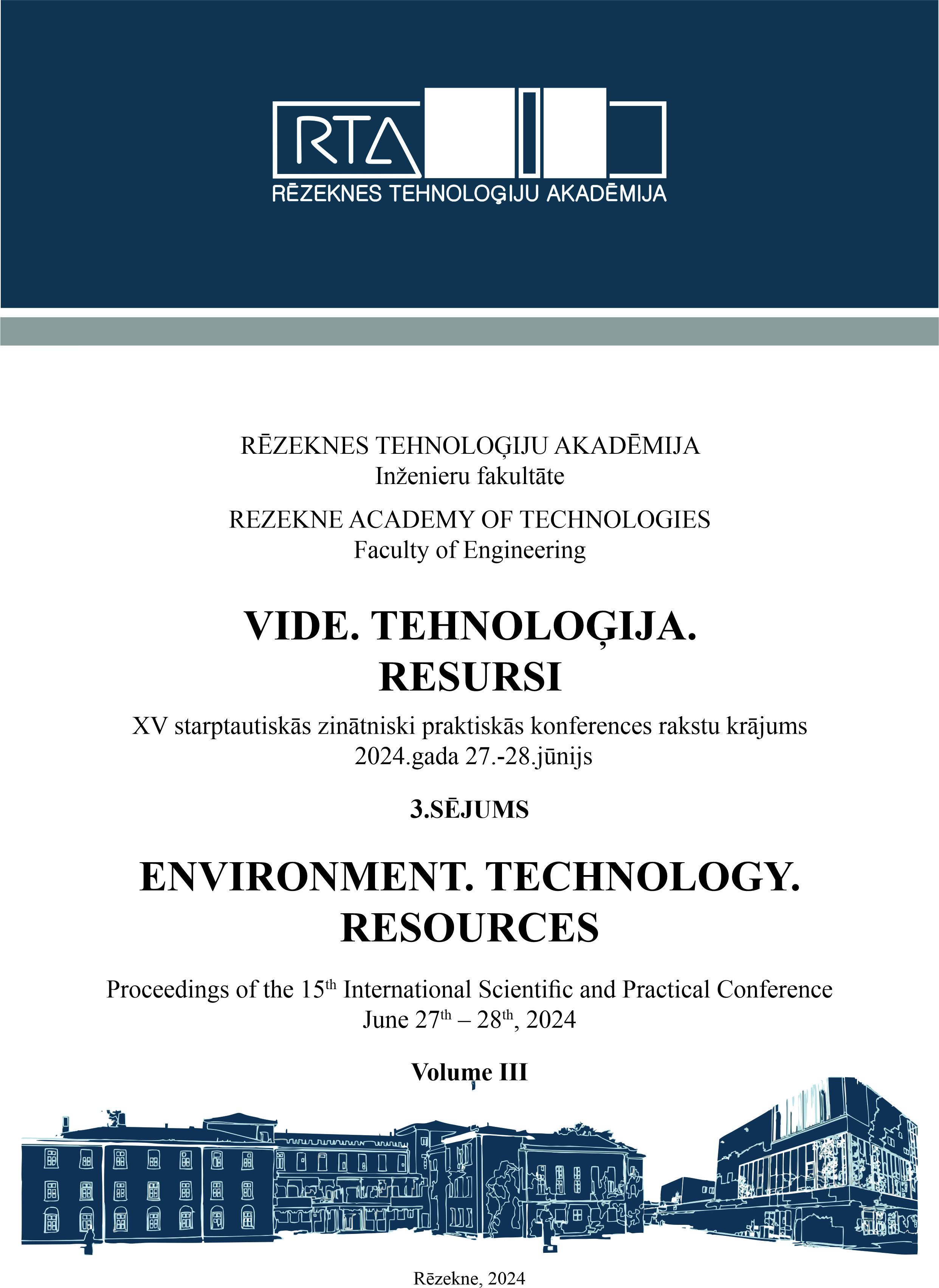MODELING THE HARDENING OF CARBON STEELS AFTER QUENCHING AND TEMPERING
DOI:
https://doi.org/10.17770/etr2024vol3.8184Keywords:
hardness, quenching, tempering, matematic modes, carbon steel, multifactorial analysisAbstract
In the paper, after an overview and defined tasks, a methodology is applied and a model is derived for establishing the dependence of hardness on carbon content, hardness after hardening and tempering temperature after hardening for the entire range of carbon steels from structural to tool steels. The research was based on eight steels and four tempering temperatures formed in a total of 32 combinations. First, one-dimensional dependences of hardness change on carbon content were derived for each annealing temperature, then accuracy was improved with a three-control parameter model. The derived model was examined and its theoretical maximum was corrected. The difference between the theoretical and the real logical maxima amounts to 17.44%. For all specified extremes, the heat treatment modes are defined.
References
Daryl G Clerc, Mechanical hardness and elastic stiffness of alloys: semiempirical models1 Contribution of NIST—an agency of the U.S. Government. Not Subject to Copyright in the United States1, Journal of Physics and Chemistry of Solids, Volume 60, Issue 1, 1999, Pages 83-102, ISSN 0022-3697
Dolchinkov N., Optimizing energy efficiency in the conditions of a global energy crisis, Optimizing Energy Efficiency During a Global Energy Crisis, 2023, ISBN13: 9798369304006 EISBN13: 9798369304013, DOI: 10.4018/979-8-3693-0400-6 pp. 1–9
Dolchinkov N., Loktionov, O.A., Korolev, I.V., Karaivanova-Dolchinkova, B.E., Influence of Electromagnetic Waves on the Human Body, 2021 Sixth Junior Conference on Lighting (Lighting), 2021, pp. 1-5, doi: 10.1109/Lighting49406.2021.9599072, Electronic ISBN:978-1-6654-3792-9, CD:978-1-6654-3791-2
Loktionov, O.A., Fedotova, E.V., Kondrateva, O.E., Dolchinkov, N.T., Kuznetsov, N.S. Actual and design wind loads for overhead transmission lines in the Central European part of Russia, IOP Conference Series: Earth and Environmental ScienceThis link is disabled., 2023, 1281(1), 012050
Dolchinkov N., Pavlov, M.P., Influence of meteorological elements in accidents in enterprises with radioactive elements or dangerous chemical substances in Bulgaria, 14th International Scienfic and Practical conference Environment. Technology. Resources. Vide. Tehnologija. Resursi, 2023, ISSN 1691-5402, 1, pp. 49–54
Dolchinkov N., Results and Analysis of Achieved Joint Research and Activities Between Rezekne Academy of Technology and Vasil Levski National Military University, 14th International Scienfic and Practical conference Environment. Technology. Resources. Vide. Tehnologija. Resursi, 2023, ISSN 1691-5402, 3, pp. 90–93
Lazov, N. Padarev, Laser Safety in Army Education, Revista, Vol. XXVIII, Nr. 1 (109), ED. Academiei Forţelor Terestre „Nicolae Bălcescu” Sibiu, Romania 2023, ISSN 2247-840X, ISSN-L = 1582-6384, pp. 61–68, DOI: 10.2478/raft-2023-0009
N. Padarev, Lyubomir Lazov, Milko Yovchev, Lyubomir Linkov, The Change of Contrast is Investigation of 75 Steel Samples Laser Marked with Different Modes. Environment. Technology. Resources. Rezekne, Latvia. Proceedings of the 14th International Scientific and Practical Conference. Volume 3, 334-338, Print ISSN 1691-5402. Online ISSN 2256-070X. Published by Rezekne Academy of Technologies, 2023 https://doi.org/10.17770/etr2023vol3.7264
Zhang, X., Tang, Jy. & Zhang, Xr. An optimized hardness model for carburizing-quenching of low carbon alloy steel. J. Cent. Southern Univ. 24, 9–16 (2017). https://doi.org/10.1007/s11771-017-3403-2
Xiaohu Deng, Dongying Ju, Modeling and Simulation of Quenching and Tempering Process in steels, Physics Procedia, Volume 50, 2013, Pages 368-374, ISSN 1875-3892
Smoljan, B., Iljkić, D. & Totten, G.E. Mathematical Modeling and Simulation of Hardness of Quenched and Tempered Steel. Metall Mater Trans B 46, 2666–2673 (2015). https://doi.org/10.1007/s11663-015-0451-6
Mahmoud Bakr, Junaidi Syarif, Ibrahim Abaker Targio Hashem, Prediction of phase and hardness of HEAs based on constituent elements using machine learning models, Materials Today Communications, Vol. 31, 2022
N.S. Reddy, J. Krishnaiah, Seong-Gu Hong, Jae Sang Lee, Modeling medium carbon steels by using artificial neural networks, Materials Science and Engineering: A, Volume 508, Issues 1–2, 2009, Pages 93-105, ISSN 0921- 5093
Faizabadi, M.J., Khalaj, G., Pouraliakbar, H. et al. Predictions of toughness and hardness by using chemical composition and tensile properties in microalloyed line pipe steels. Neural Comput & Appl 25, 1993–1999 (2014). https://doi.org/10.1007/s00521-014-1687-9
Tontchev, N., Materials science, Effective solutions, and technological variants, Lambert,Academic Publishing, 2014, 142
Martin Walbrühl, David Linder, John Ågren, Annika Borgenstam, A new hardness model for materials design in cemented carbides, International Journal of Refractory Metals and Hard Materials, Volume 75, 2018, Pages 94-100
S.G. Borisade, O.O. Ajibola, A.O. Adebayo, A. Oyetunji, Development of mathematical models for the prediction of mechanical properties of low carbon steel (LCS), Materials Today: Proceedings,Volume 38, Part 2, 2021, Pages 1133-1139
Tontchev, N., Gaydarov, V., N. Hristov, N., Analyzes and applications through thecomputational approach DEFMOT, Sofia, 2022, 167 p. (in Bulgarian),
Downloads
Published
Issue
Section
License
Copyright (c) 2024 Nikolay Tontchev, Normunds Teirumnieks, Emil Yankov

This work is licensed under a Creative Commons Attribution 4.0 International License.



